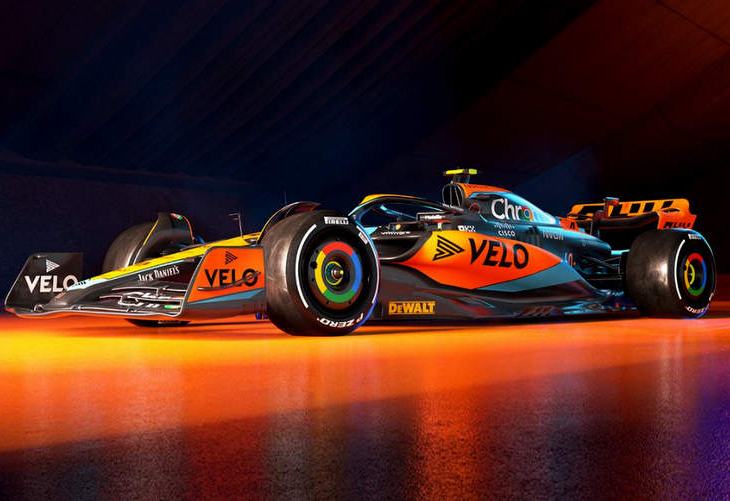Formula 1 The Epitome of Speed, Innovation, and Glamour,
When it comes to motorsports, few names carry the same weight and excitement as Formula 1. Synonymous with cutting-edge technology, exhilarating races, and a dash of glamour, Formula 1 has captured the hearts of fans worldwide for decades. In this blog post, we delve into the high-octane world of Formula 1, exploring its rich history, iconic moments, and the magic that makes it one of the most celebrated motorsports on the planet.
A Legacy of Speed and Precision: The Origins of Formula 1
Formula 1, often abbreviated as F1, originated from the early European Grand Prix motor racing of the 1920s and 1930s. The term “Formula” refers to the rules and specifications that define the cars’ design and performance. In 1950, the FIA (Fédération Internationale de l’Automobile) launched the Formula One World Championship, formalizing the pinnacle of single-seater racing.
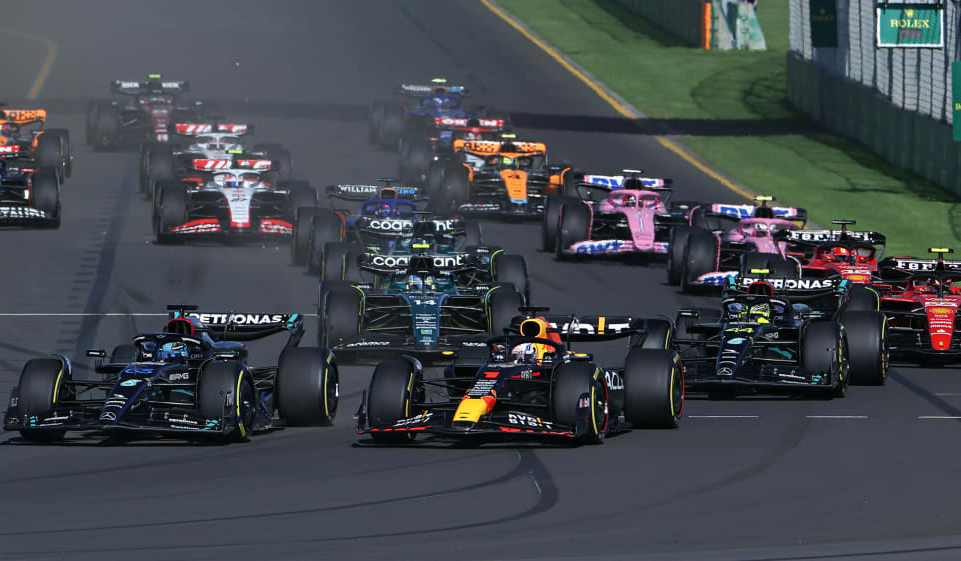
Engineering Marvels: Cutting-Edge Technology and Innovation
Formula 1 is a showcase of engineering brilliance, where innovation and technology meet the need for speed. From aerodynamics and hybrid power units to advanced materials and tire compounds, teams constantly push the boundaries of what’s possible. The quest for performance enhancement has led to breakthroughs that influence not only the sport but also the automotive industry as a whole.
The Glitz and Glamour: The Formula 1 Lifestyle
Formula 1 is more than just a sport; it’s a lifestyle that exudes elegance and prestige. The sport’s global appeal is evident in its glamorous events, luxurious hospitality, and iconic circuits set against stunning backdrops. From the glitzy Monaco Grand Prix to the historic Monza circuit in Italy, each race offers a unique blend of excitement and elegance that attracts fans from all walks of life.
Speed and Strategy: The Thrills of Race Day
Race day in Formula 1 is a symphony of speed and strategy. Drivers push their cars to the limits, navigating high-speed straights and challenging corners with surgical precision. Pit stops become a ballet of synchronized movements as teams change tires, refuel, and make critical adjustments. The blend of tire strategy, fuel management, and tactical decision-making adds an extra layer of intrigue to each race.
The Greatest of All Time: Legendary Drivers
Formula 1 has seen the rise of legendary drivers who etched their names in history. Icons like Juan Manuel Fangio, Ayrton Senna, and Michael Schumacher are celebrated for their exceptional skills, fierce rivalries, and championship victories. Each era introduces new talents who aim to join the pantheon of racing greatness.
Global Appeal: Races Across Continents
The Formula 1 calendar spans the globe, taking the excitement of racing to diverse cultures and landscapes. From the opulence of Abu Dhabi’s Yas Marina Circuit to the historic charm of Silverstone in England, the races offer unique experiences for both drivers and fans. The sport’s worldwide presence cements its status as a global phenomenon.
Rivalries and Dramatic Moments: The Essence of Competition
Formula 1 is a theater of rivalries, where drivers and teams vie for supremacy on the track. Rivalries like Senna vs. Prost and Hamilton vs. Rosberg have added drama and intensity to the sport. High-stakes moments, daring overtakes, and unexpected plot twists keep fans at the edge of their seats, making each race a rollercoaster of emotions.
Sustainability and Future Outlook
In recent years, Formula 1 has taken steps to address environmental concerns and promote sustainability. The introduction of hybrid power units and a focus on reducing the sport’s carbon footprint signal a commitment to a greener future. Formula 1 aims to combine thrilling racing with responsible stewardship of the planet.
Conclusion: The Art of Perfection
Formula 1 is a symphony of artistry, precision, and passion. It combines cutting-edge technology with the timeless pursuit of speed, creating an experience that captivates the senses. From the roar of engines to the strategic brilliance of teams, Formula 1 represents the pinnacle of motorsports, where the pursuit of perfection is never-ending. As fans and enthusiasts continue to be swept up in the adrenaline-fueled spectacle, Formula 1 remains a timeless testament to human ingenuity and the thrill of the race.
![]()
![]()
![]()
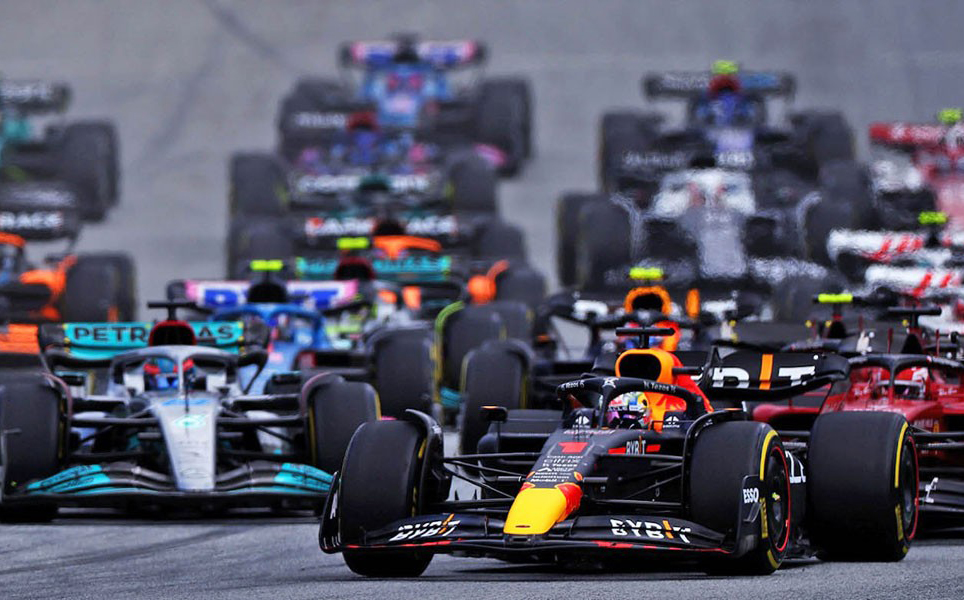
Facts about:
- Formula 1 originated from the European Grand Prix motor racing of the 1920s and 1930s.
- The inaugural Formula One World Championship was held in 1950.
- Giuseppe Farina won the first Formula 1 World Championship driving for Alfa Romeo.
- Juan Manuel Fangio holds the record for most World Drivers’ Championship titles, with five championships.
- The FIA (Fédération Internationale de l’Automobile) is the governing body of Formula 1.
- The Constructors’ Championship was introduced in 1958 to recognize the best-performing team.
- The Monaco Grand Prix is one of the oldest and most prestigious races on the Formula 1 calendar.
- Ayrton Senna, Alain Prost, and Nelson Piquet are known as the “Three Musketeers” of Formula 1 in the 1980s.
- The Formula 1 season usually consists of 20 to 23 races held across different countries.
- The FIA introduced the F1 Safety Car in 1993 to improve safety during races.
Race Cars and Regulations:
- Formula 1 cars are single-seaters with open-wheel design, designed for maximum aerodynamic efficiency.
- Each car’s chassis and bodywork are designed to specific regulations outlined by the FIA.
- The FIA establishes rules for engine specifications, weight limits, and technical components to ensure fair competition.
- The FIA introduced hybrid power units in 2014, combining internal combustion engines with energy recovery systems.
- Pirelli is the official tire supplier for Formula 1, providing different tire compounds for different track conditions.
- Teams must adhere to regulations regarding car dimensions, weight, and safety features.
- The minimum weight of an F1 car, including the driver, is determined by the FIA.
- Teams participate in pre-season testing to fine-tune their cars’ performance and reliability.
- Wind tunnels and computational fluid dynamics are used to optimize the aerodynamics of F1 cars.
- Formula 1 cars can accelerate from 0 to 60 mph in around 2.6 seconds, showcasing their incredible speed.
Racing Circuits:
- Formula 1 races take place on various types of tracks, including street circuits, road courses, and permanent tracks.
- Iconic tracks like Monza (Italy), Silverstone (UK), and Spa-Francorchamps (Belgium) have a rich history in F1.
- The Circuit de Monaco is known for its narrow streets and challenging layout, making it a highlight of the season.
- Tracks like Suzuka (Japan) and Interlagos (Brazil) are beloved by drivers for their technical challenges.
- Some circuits have long straights, while others feature tight corners and elevation changes, creating diverse challenges.
Drivers and Teams:
- Lewis Hamilton holds the record for most Grand Prix wins, surpassing Michael Schumacher’s previous record.
- Michael Schumacher has won a record seven World Drivers’ Championships.
- Fernando Alonso is known for his versatile skills, having won championships with two different teams.
- Kimi Räikkönen is famous for his nonchalant and humorous radio communications during races.
- Sebastian Vettel won four consecutive World Drivers’ Championships with Red Bull Racing from 2010 to 2013.
Technology and Innovation:
- Formula 1 cars generate immense downforce to improve cornering grip, achieved through intricate aerodynamic designs.
- Teams invest heavily in research and development to gain a competitive edge through technological innovations.
- Hybrid power units use energy recovery systems to harness energy from braking and exhaust heat, boosting performance.
- The Drag Reduction System (DRS) is a technology that temporarily reduces aerodynamic downforce to facilitate overtaking.
- Teams use simulators to simulate race conditions, test car setups, and help drivers familiarize themselves with tracks.
Race Weekend Format:
- A Formula 1 race weekend typically includes practice sessions on Friday, followed by qualifying on Saturday and the race on Sunday.
- Qualifying sessions determine the starting grid for the race, with the fastest driver securing pole position.
- The race distance varies depending on the track, with most races covering around 305 kilometers (190 miles).
- Points are awarded to the top 10 finishers, with the race winner receiving 25 points.
- The driver with the most points at the end of the season is crowned the World Drivers’ Champion.
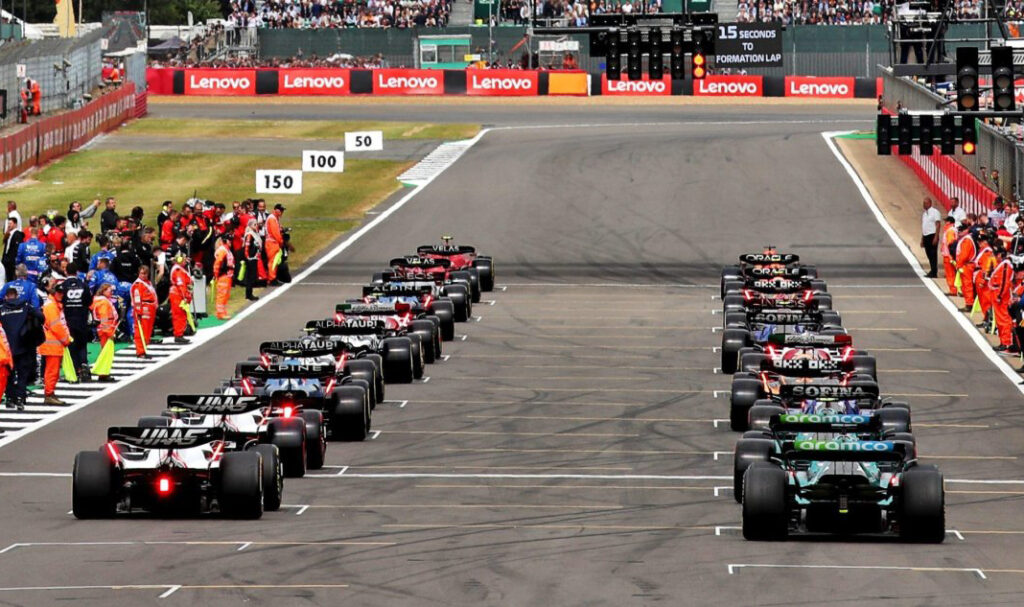
Safety Measures:
- The Halo device, introduced in 2018, provides enhanced protection for the driver’s head in the event of an accident.
- The FIA introduced a Virtual Safety Car (VSC) to control the speed of cars during hazardous situations.
- Medical cars and marshals are stationed around the track to respond quickly to accidents and ensure driver safety.
Cultural Impact:
- Formula 1 has a massive global fan base, with fans from all continents following the sport.
- The Formula 1 anthem, composed by Brian Tyler, adds to the grandeur of the sport’s events.
- Drivers’ helmets often feature distinctive designs that reflect their personality, nationality, or sponsorships.
- Formula 1 races attract high-profile celebrities and dignitaries, adding to the sport’s glamorous appeal.
- The sport has inspired documentaries, books, and movies, offering a glimpse into the world of racing.
Team Dynamics:
- Formula 1 teams consist of drivers, engineers, mechanics, strategists, and various specialists.
- The relationship between a driver and their engineer is crucial for car setup and race strategy.
- Pit stops require seamless coordination among pit crew members to change tires and perform necessary adjustments.
- Team principals and managers oversee the overall operations of the team and strategic decision-making.
Financial Aspects:
- Formula 1 is known for its high costs, with teams requiring substantial budgets to compete competitively.
- Teams rely on sponsorships, partnerships, and prize money to fund their operations.
- Commercial rights to Formula 1 are owned by Formula One Group, led by Liberty Media.
F1 in Pop Culture:
- Formula 1 has appeared in movies like “Rush” and “Senna,” giving audiences a glimpse into the sport’s history.
- Celebrities like Gerard Butler and Chris Hemsworth have been involved in F1 events and promotions.
- The sport’s iconic cars and races are often referenced in pop culture and media.
Traveling Circus:
- The Formula 1 calendar takes teams and personnel around the world, showcasing the global appeal of the sport.
- Teams travel with a vast amount of equipment, including cars, spare parts, and infrastructure.
Rain and Weather Challenges:
- Rain can significantly impact races, adding unpredictability and requiring teams to adjust their strategies.
- Wet races demand different tire choices and driving techniques compared to dry conditions.
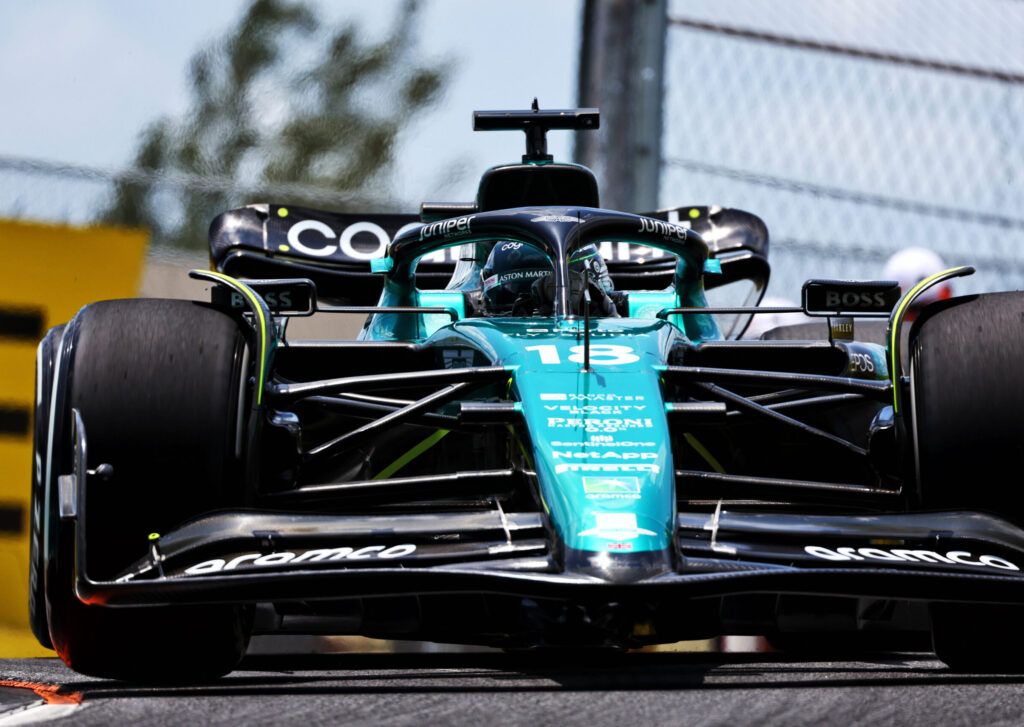
F1’s Contribution to Technology:
- Innovations developed in Formula 1 often find applications in everyday road cars, improving safety and efficiency.
- Formula 1 has driven advancements in materials, aerodynamics, and energy recovery systems.
Legendary Race Rivalries:
- The rivalry between Ayrton Senna and Alain Prost in the late 1980s is considered one of the greatest in F1 history.
- The intense competition between Lewis Hamilton and Nico Rosberg at Mercedes added drama to the sport.
F1’s Connection to the Automotive Industry:
- Formula 1 serves as a platform for automakers to showcase their technological expertise and promote their brands.
- Hybrid power unit technology from Formula 1 has influenced the development of hybrid road cars.
Team Switches and Transfers:
- Drivers often switch teams in search of better opportunities or new challenges.
- Notable driver switches, like Fernando Alonso’s move to McLaren and then back to Renault, create buzz and anticipation.
Development Race:
- Teams engage in a constant development race to improve their cars’ performance throughout the season.
- Aero upgrades, chassis refinements, and power unit optimizations contribute to a team’s competitive edge.
Rising Young Talents:
- Formula 1 frequently sees the emergence of young talents, like Max Verstappen and Charles Leclerc, who challenge established stars.
- Young drivers often bring fresh perspectives and fearless approaches to racing.
F1 Heritage:
- The history of Formula 1 is rich with legendary drivers, iconic cars, and historic races.
- Classic races like the Italian Grand Prix at Monza and the British Grand Prix at Silverstone have been held for decades.
Diverse Nationalities:
- Formula 1 boasts a diverse grid of drivers from various countries, reflecting the global nature of the sport.
- Countries like Australia, Brazil, Finland, Germany, and more have produced world-class F1 drivers.
Multi-Disciplinary Talent:
- F1 drivers possess skills in various disciplines, including fitness, mental resilience, and technical understanding.
- Physical fitness is crucial for drivers to withstand the high g-forces experienced during races.
F1 Technology Showcases:
- Carbon fiber monocoques, which provide safety and lightweight construction, are used in F1 cars.
- Energy recovery systems in F1 have paved the way for advancements in hybrid and electric road cars.
F1 as a Team Sport:
- Success in Formula 1 requires collaboration among the entire team, not just the driver.
- Engineers, strategists, mechanics, and pit crew members contribute to a team’s performance.
The Global Fan Community:
- Formula 1 fans come from all walks of life and corners of the world, united by their passion for racing.
- Fan forums, social media, and online platforms provide avenues for fans to connect and discuss the sport.
F1’s Evolution:
- Over the years, Formula 1 has evolved in terms of safety standards, regulations, and technical advancements.
- The sport has embraced changes to enhance competition, improve safety, and address environmental concerns.
Support Races:
- Formula 1 race weekends often feature support races, such as Formula 2 and Formula 3, showcasing rising talents.
- These support series provide opportunities for young drivers to gain experience and catch the attention of F1 teams.
F1’s Contribution to Safety:
- F1 has been a driving force in improving safety measures in motorsports, influencing innovations like the HANS device.
- Developments in helmet design and cockpit protection have enhanced driver safety.
Record-Breaking Moments:
- Michael Schumacher holds the record for the most consecutive World Drivers’ Championships (5).
- Lewis Hamilton surpassed Schumacher’s record for the most Grand Prix wins.
- The most dominant season is considered to be Michael Schumacher’s 2002 season with Ferrari, where he won 11 out of 17 races.
Team Principal’s Role:
- Team principals are responsible for overall team management, including strategic decisions and driver line-ups.
- Ross Brawn, Stefano Domenicali, and Toto Wolff are prominent figures who have held influential team principal roles.
Historic Circuits:
- Some historic circuits, like the Nürburgring Nordschleife, are no longer used for Formula 1 due to safety concerns.
- The Nürburgring Nordschleife is affectionately known as “The Green Hell.”
F1’s Socio-Economic Impact:
- Hosting a Formula 1 race can bring economic benefits to the host country by boosting tourism and local businesses.
- Cities with F1 races often see an influx of visitors and a surge in hotel bookings.
F1’s Role in Charity:
- The Formula 1 community supports charitable initiatives and fundraising efforts through partnerships and events.
- The sport has raised funds for various causes, including disaster relief and healthcare.
Legacy of Ayrton Senna:
- Ayrton Senna is considered one of the greatest F1 drivers of all time, known for his intense rivalry with Alain Prost.
- Senna’s tragic death at Imola in 1994 led to significant safety reforms in Formula 1.
Influence on Young Aspirants:
- Formula 1 serves as an inspiration for young aspiring drivers to pursue careers in motorsports.
- Karting is often the first step for young talents to enter the world of competitive racing.
F1’s Impact on Technology Transfer:
- Advancements in brake technology, engine efficiency, and aerodynamics from F1 have influenced road car development.
- Hybrid and energy recovery systems from F1 have contributed to the development of road-going hybrids.
Racing Strategy and Tactics:
- Tire management and race strategy play a crucial role in determining race outcomes.
- Teams must choose the right tire compounds and timing for pit stops to maximize performance.
Prestigious Constructors’ Championship:
- The Constructors’ Championship recognizes the team that accumulates the most points during the season.
- Scuderia Ferrari holds the record for the most Constructors’ Championships.
F1’s Appeal to Young Audiences:
- Formula 1 has engaged younger audiences through digital platforms, interactive content, and esports.
- Esports competitions like the F1 Esports Pro Series provide a platform for gamers to compete virtually.
F1 in Changing Times:
- Formula 1 has adapted to changing global dynamics by embracing sustainability and reducing its carbon footprint.
- The sport aims to be carbon-neutral by 2030 through various initiatives and innovations.
Team Radio Communication:
- Fans get insights into the race through team radio communications, where drivers and teams discuss strategy and conditions.
- Team radio often provides entertaining and informative interactions between drivers and their engineers.

Spectacular Overtakes:
- Overtaking maneuvers, especially in challenging corners and on straights, are highlights of Formula 1 races.
- DRS (Drag Reduction System) is used to facilitate overtaking by temporarily reducing a car’s aerodynamic downforce.
F1’s Contribution to Engineering Education:
- F1’s focus on engineering, aerodynamics, and mechanical systems has inspired young minds to pursue engineering careers.
- Universities often collaborate with F1 teams to provide students with practical experiences.
Media Coverage and Broadcasting:
- F1 races are broadcast to millions of viewers worldwide, with broadcasters providing in-depth coverage of each race weekend.
- Commentary teams provide insights, analysis, and play-by-play commentary during races.
Fan Engagement:
- Fans can engage with Formula 1 through official apps, social media, and virtual fan experiences.
- The official Formula 1 YouTube channel provides behind-the-scenes content, highlights, and historical features.
Support from Manufacturers:
- Manufacturers like Mercedes, Ferrari, Renault, and Honda provide power units and technology to teams.
- Manufacturers’ involvement enhances the sport’s technological advancement and competitiveness.
Impact on Local Economies:
- Hosting a Formula 1 race generates revenue for local businesses, hotels, restaurants, and tourism.
- The influx of international visitors contributes to the growth of the host city’s economy.
Environmental Initiatives:
- F1 has committed to sustainability by introducing biofuels and working towards reducing its carbon footprint.
- The F1 Hybrid Power Unit is a step towards energy-efficient racing technology.
Driver’s Contribution to Car Development:
- Drivers provide crucial feedback to engineers about the car’s handling, balance, and performance.
- Engineers use drivers’ feedback to fine-tune the car’s setup and improve its competitiveness.
F1’s Physical Demands:
- Drivers must withstand extreme g-forces and high temperatures during races.
- Physical fitness and mental resilience are essential for drivers to perform at their best.
Evolving Circuit Designs:
- Circuit designs have evolved to accommodate faster cars, higher safety standards, and better spectator experiences.
- Modern circuits incorporate safety features like run-off areas and barriers designed to minimize impact.
Fan Festivals:
- F1 fan festivals and events bring the sport closer to fans, featuring demonstrations, autograph sessions, and interactive experiences.
- Fan festivals are held in various cities, providing opportunities for fans to engage with the sport.
Classic and Historic Cars:
- Classic and historic F1 cars are often showcased at events, offering fans a glimpse into the sport’s evolution.
- These cars represent different eras in F1, capturing the essence of each period.
Social Responsibility Initiatives:
- F1 and its teams engage in various social responsibility initiatives, supporting local communities and causes.
- Initiatives include education programs, healthcare support, and charitable contributions.
Innovative Aerodynamics:
- F1 teams invest heavily in aerodynamic research to optimize downforce and minimize drag.
- Wind tunnels and computational fluid dynamics simulations are used to refine aerodynamic designs.
F1’s Impact on Youth Development:
- Karting, a stepping stone to F1, fosters young talent and teaches essential racing skills.
- Formula 1 teams often spot promising young drivers through karting championships.
F1’s Dynamic Races:
- F1 races feature unpredictable moments like safety car periods, weather changes, and unexpected retirements.
- These variables add excitement and drama to the races.
Team Alliances and Partnerships:
- Formula 1 teams often collaborate with technology companies, universities, and research institutions.
- Partnerships enhance innovation and provide opportunities for cross-industry knowledge transfer.
Travel and Logistics Challenges:
- Teams and equipment travel thousands of miles over the course of the season, requiring intricate logistics planning.
- The global nature of the sport necessitates careful coordination of transportation and resources.
F1’s Contribution to STEM Education:
- Formula 1 provides educational materials and initiatives to promote science, technology, engineering, and mathematics (STEM) education.
- Students are inspired by the technological aspects of F1 to pursue careers in STEM fields.
Record-Breaking Laps:
- Fastest laps, lap records, and pole positions are sought after by drivers and teams.
- These records showcase a driver’s speed and car’s performance on specific circuits.
F1’s Role in Shaping Automotive Industry Trends:
- F1’s pursuit of efficiency and performance influences automotive industry trends, from hybrid technology to lightweight materials.
- Innovations developed in F1 often find applications in road cars.
Team Collaborations and Affiliations:
- Some teams share resources and collaborate on technical aspects to optimize performance.
- Collaboration allows smaller teams to access technical expertise and resources from larger teams.
Health and Fitness Regimens:
- Drivers adhere to rigorous health and fitness routines to maintain peak physical and mental condition.
- Fitness training, nutrition, and mental focus are critical components of a driver’s preparation.
Adaptive Strategies:
- Race strategies often change based on real-time developments like weather, safety cars, and competitor actions.
- Teams must be prepared to adapt their plans during races to capitalize on emerging opportunities.
Fan Engagement through Social Media:
- Formula 1 teams and drivers engage with fans through social media platforms, sharing updates, insights, and behind-the-scenes content.
- Social media enhances the fan experience by providing direct interactions with drivers and teams.
F1’s Contribution to Automotive Safety:
- F1’s commitment to safety has led to advancements in cockpit protection, helmets, and car designs.
- Innovations developed for F1 cars have improved the safety of road vehicles.
Strategies and Pit Stops:
- Pit stops involve intricate choreography, with teams changing tires, refueling, and making adjustments in a matter of seconds.
- Pit stop strategies play a crucial role in race outcomes, influencing positions and race dynamics.
The Spirit of Sportsmanship:
- Drivers and teams compete fiercely on the track while displaying sportsmanship and respect off the track.
- Celebratory handshakes, gestures of support, and mutual admiration are common in the F1 paddock.
Team Dynamic and Chemistry:
- Team chemistry is vital for success, as engineers, mechanics, and drivers must work cohesively under pressure.
- Strong teamwork enhances communication and leads to better car performance.
Classic F1 Engine Sounds:
- Classic F1 cars are remembered for their distinctive engine sounds, which have evolved with changes in regulations.
- Fans have a nostalgic attachment to the unique engine notes of different eras.
The Grand Prix Weekend Experience:
- The Grand Prix weekend includes practice sessions, qualifying, and the main race, providing fans with a complete racing experience.
- Fans immerse themselves in the excitement, from watching cars on track to enjoying entertainment in the paddock.
Celebrity Involvement:
- Celebrities often attend Formula 1 races, adding star power to the events.
- Celebrities like David Beckham, Gerard Butler, and Chris Hemsworth have participated in F1 events.
Post-Race Celebrations:
- Podium celebrations are a highlight of Formula 1 races, where drivers spray champagne to celebrate their achievements.
- Podium ceremonies are a moment of joy and recognition for drivers and teams.
F1’s Economic Impact:
- Hosting a Formula 1 race brings economic benefits to the host city by boosting tourism and local businesses.
- Visitors spend money on accommodations, dining, transportation, and merchandise.
Team Personnel:
- Teams employ a wide range of personnel, including engineers, data analysts, mechanics, physiotherapists, and hospitality staff.
- Each team member contributes to the overall functioning of the team.
Driver’s Helmets:
- Drivers’ helmets often feature intricate designs that reflect their personality, nationality, and team colors.
- Helmets are also designed for safety, providing protection to the driver’s head.
Growth of Women’s Involvement:
- The inclusion of women in various roles, from engineers to team principals, highlights the growing diversity in Formula 1.
- Women’s involvement encourages young girls to pursue careers in motorsports.
F1’s Role in Tourism:
- Hosting a Formula 1 race attracts international visitors, boosting tourism and creating a festive atmosphere.
- Race weekends become major events that attract fans from different parts of the world.
Sponsorship and Branding:
- Teams secure sponsorships and branding partnerships to fund their operations and increase visibility.
- Sponsor logos adorn cars, driver suits, team uniforms, and trackside banners.
F1’s Impact on Local Communities:
- Formula 1 events create opportunities for local businesses to showcase their products and services.
- Communities benefit from the increased economic activity brought by F1 races.
Future of Formula 1:
- Formula 1 continues to evolve, embracing technology, sustainability, and fan engagement to ensure its relevance and appeal for future generations.
![]()
More articles:

